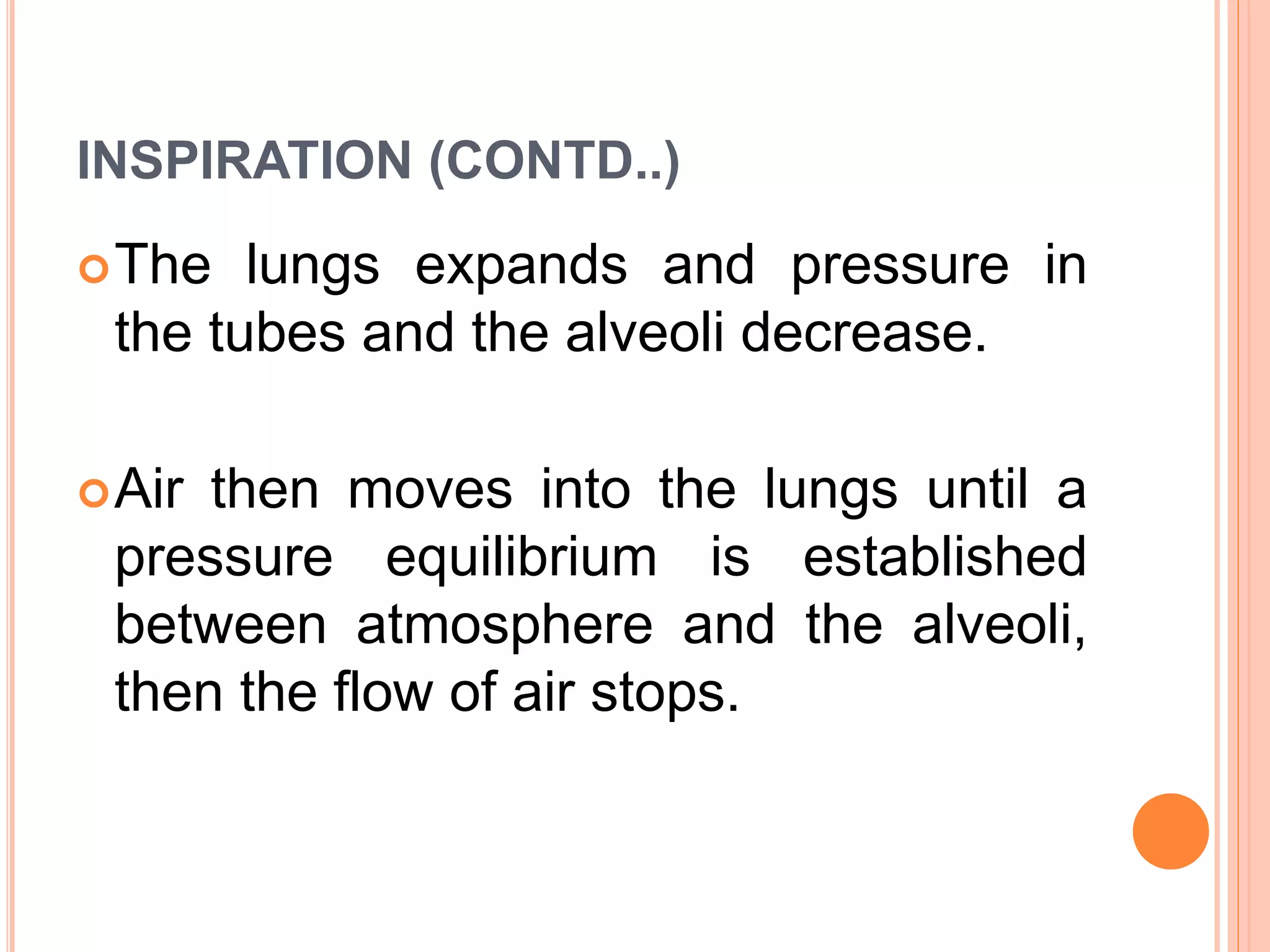This document summarizes the physiology of respiration. It describes pulmonary ventilation as the process of breathing involving air exchange between the lungs and atmosphere. Inspiration occurs when intercostal muscles and diaphragm contract, enlarging the thoracic cavity and decreasing pressure to draw air into the lungs. Expiration is passive, as muscles relax and lungs recoil, increasing pressure to expel air. It also defines lung volumes like tidal volume and inspiratory reserve volume.























































































